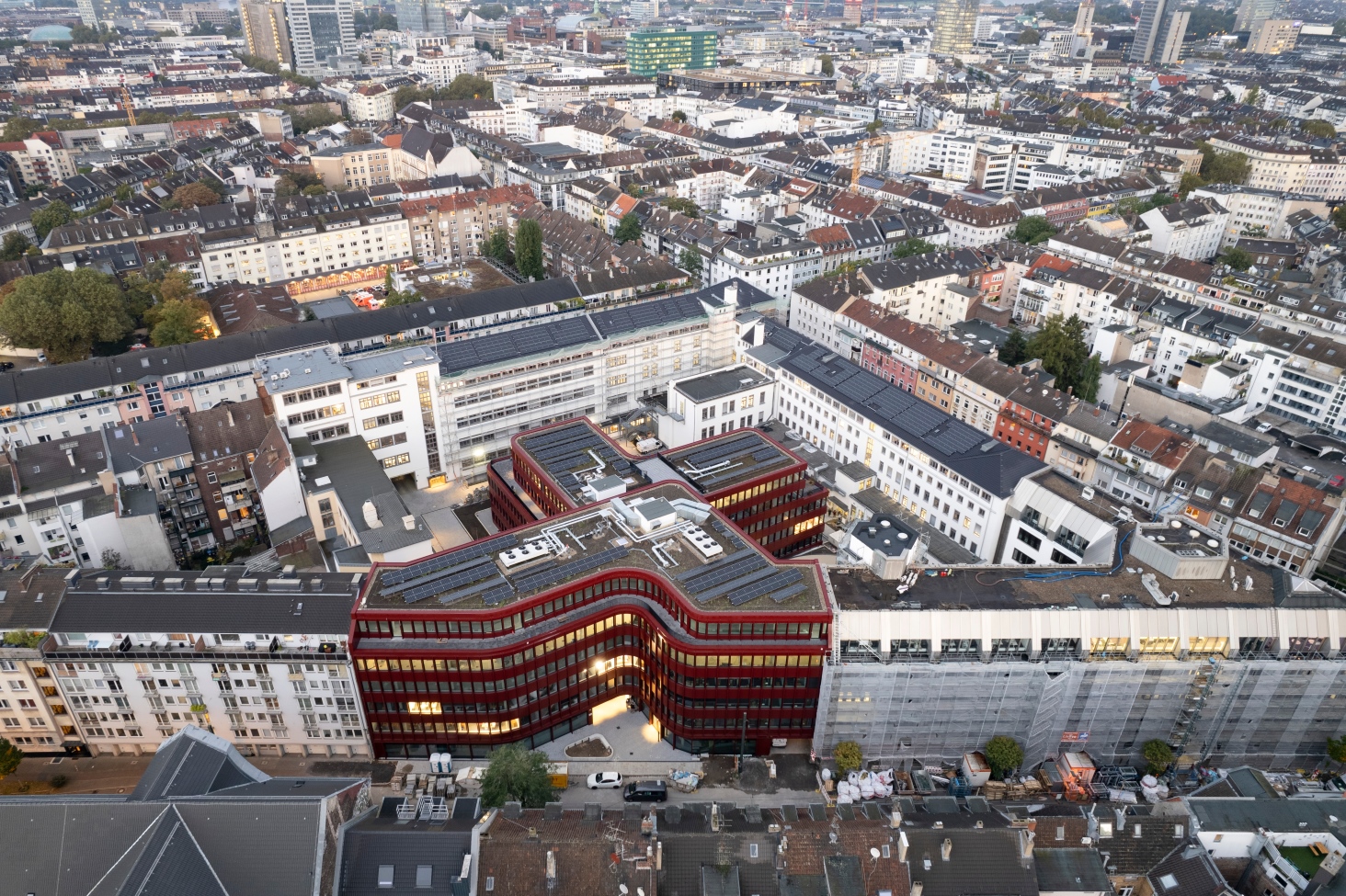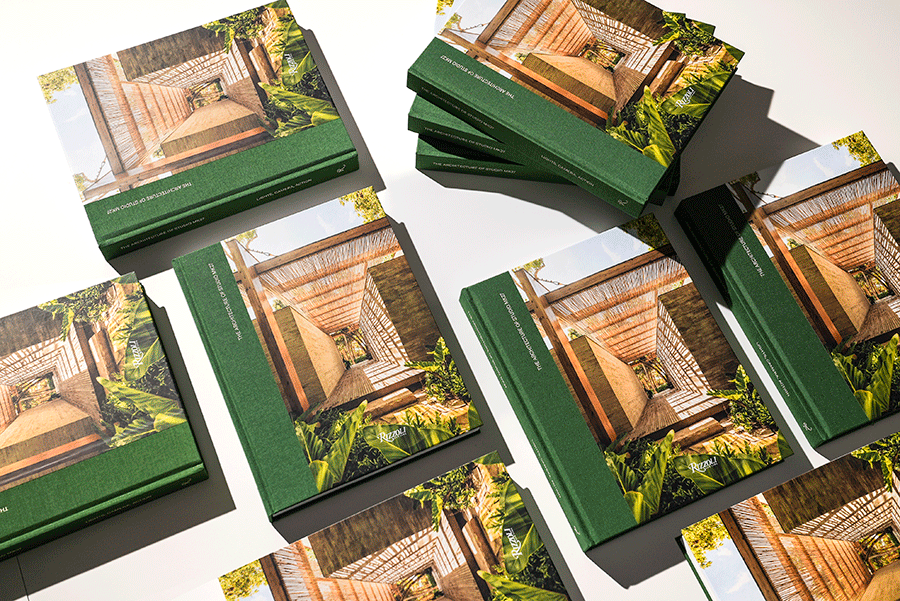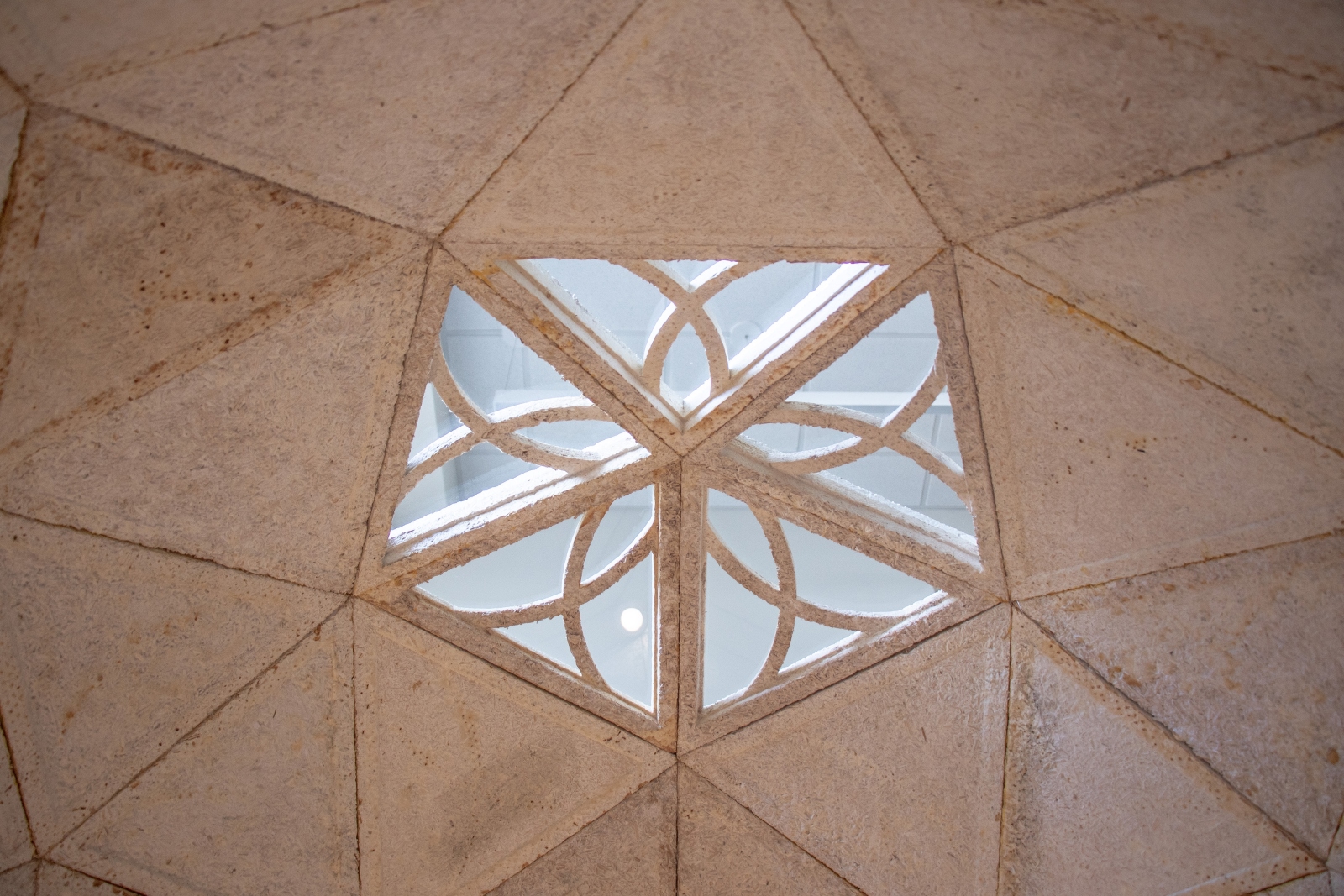Studio MK27, a renowned São Paulo-based architecture firm, is proud to announce the release of “The Architecture of Studio MK27,” their debut monograph published by Rizzoli New York. The book aims to analyse the current stage of maturity and suggests new directions for Studio MK27’s broad research in different scales all around the world. Located in the city of São Paulo, Brazil, Kogan founded Studio MK27 in the late ’70s and it now includes partners Diana Radomysler, Renata Furlanetto, Suzana Glogowski, and Mariana Simas. They lead a team comprised of 50 architects, most of whom have been together for over a decade.

Divided into 5 sections – each one entrusted to a design/architecture professional linked to the studio’s activity – the book offers a wide overview of Studio MK27’s work through twenty-seven different projects located in various contexts all over the world: from urban settings in Brazil and Europe to the Canadian mountains to the Maldives. In all these projects, the Studio brings its unmistakable touch and philosophy, blurring the boundaries between the built and natural environments, building stories and shaping spaces through a meticulous process of design with great attention to textures and details.
Each chapter’s opening page, as well as the back cover of the book, features a series of hieroglyphs representing the architectural language and the grammar developed by Studio MK27 throughout the years.
“Our camera has always been focused on the landscape, capturing the endless possibilities that unfold before our eyes. For the first time, we decided to revisit the past years’ negatives from our camera. It’s been practically a lifetime dedicated to architecture, collectively building a body of work through a patient and consistent journey. We are happy to share our story. We hope our architecture language resonates elsewhere.”
– Studio MK27.
The book is made possible also thanks to the support and effort of Minotti – one of the most well-known Italian design brands – led by the eponymous family since 1948. The company began its collaboration with Studio MK27 in 2018 and, through the years, has developed a solid personal and professional relationship with the whole team.
SECTION 1 – INSIDE OUT by Gabriel Kogan
The first section of the book is dedicated to the relationship between the inside and the outside in Studio MK27’s architectural projects. The fluidity and communication between these spaces are symbolised by the wide use of glass panels on the buildings’ facades, which allow in natural light as well as the surrounding landscape. The glass, the windows, and the long floor-to-ceiling openings do not define the raison d’être of this architecture but work as devices in the design process, and the construction of the building’s spatiality. The relation between the interior and the exterior in Studio MK27’s projects is a unique and new interpretation of both pre-modern Japanese architecture and the Corbusian ideas on the relation between the outside of the building and its surroundings.
In Studio MK27’s projects, the interior gently transitions to the exterior without any drops, and vice versa: the inside/outside fluidity is guaranteed by both the absence of visual barriers and the spatial continuity of the surfaces; and this continuity is possible thanks to “in-between spaces”, namely buffering areas between the inner and the outer spaces. It might be a veranda covered by a cantilevered slab (e.g. Planar House, 2018 or Redux House, 2013), architectural devices to filter the light as seen in the Brazilian and Moorish traditions (Jungle House, 2015), sliding doors and windows allowing the air and smells to flow freely or the use of glass as a way of securing a seamless visual connection of the spaces.
SECTION 2 – NARRATIVE by Ellie Stathaki
Architecture has much to do with the narrative developed around the buildings, as they often help us describe the future. As much as movies, they can be used as a lens to highlight possibilities. Studio MK27 founder Marcio Kogan’s buildings emphasize such characteristics because they are born from a narrative, from stories. Kogan’s background in filmmaking is surely connected to how the studio interprets the projects and approaches design and architecture: a project, for Studio MK27, is not a static element, but rather a moving image which encompasses movement, sound and light. All of this contributes to creating a story around a project, a narrative that goes beyond the mere aesthetic of the composition and of the materials.
The studio’s first hotel project, the Patina Maldives (Fsari Islands, 2020) is the perfect representation of such an approach. This small village is a complex of cabins, gardens, bars, restaurants, and wellness and art pavilions coming together to compose a journey that introduces visitors to the island; the careful positioning of the architecture is essential, not to upstage the natural landscape. The challenge here was to integrate the studio’s specific aesthetics, its modernist inspirations, and its clean shapes, with the Maldivian way of life which was the narrative behind this hospitality project. Architecture had to be part of the tourists’ experience, supporting their journey to enhance their temporary stay in a wonderful corner of the Indian Ocean.
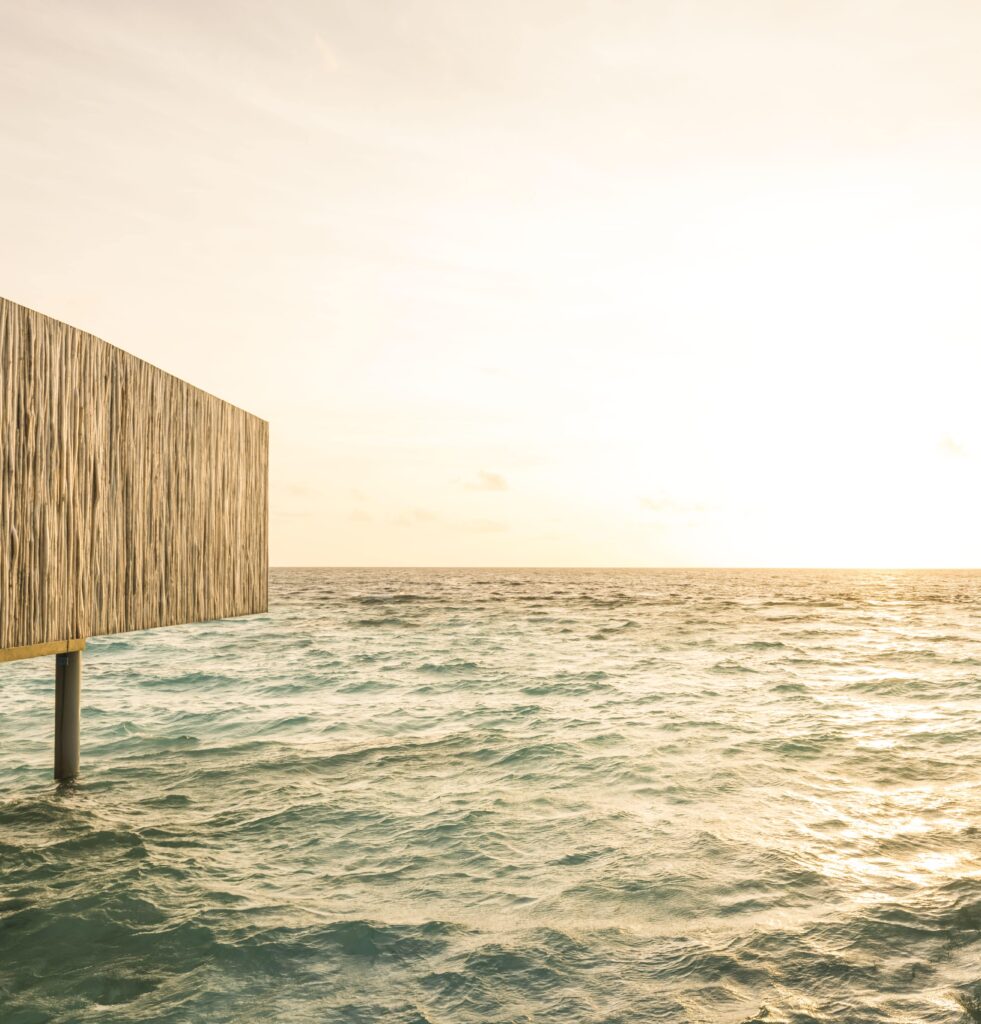
In a very different part of the world, the Somosaguas private residential complex on the outskirts of Madrid (2017), the studio created twenty-one houses using off-the-shelf materials and elements, inspired by the traditional Spanish rural village. Walking through Somosaguas, visitors feel a sense of discovery and the welcoming relaxation of the country’s small-scale countryside communities where luxury means quality and functionality.
SECTION 3 – LIGHT by Amy Frearson
Daylight plays an important role in Kogan’s life, as well as in Studio MK27 inspirations: the fact that the studio is located in Brazil means that the sun is usually up at 6 am and sets at 6 pm almost all year long; the relationship with light, and its correlation with the materials and the designs are fundamental in the Kogan’s practice. In Sand House (Trancoso, 2019) the linear structure of the five concrete boxes that form the complex is set back from the shoreline and features a spacious sundeck surrounded by trees; the sixty-five-meter-long pergola made of laminated timber frames and eucalyptus branches, creates captivating striped patterns as sunlight filters through. Kogan’s background in filmmaking influences the studio’s masterful control of light, shaping the atmosphere within the residence, often using creatively the mashrabiya, a traditional privacy screen, not merely for climate control but as a device to define the quality of light. This purposeful manipulation of light and shadow turns the Sand House into a modernist masterpiece, seamlessly blending with its wild surroundings.
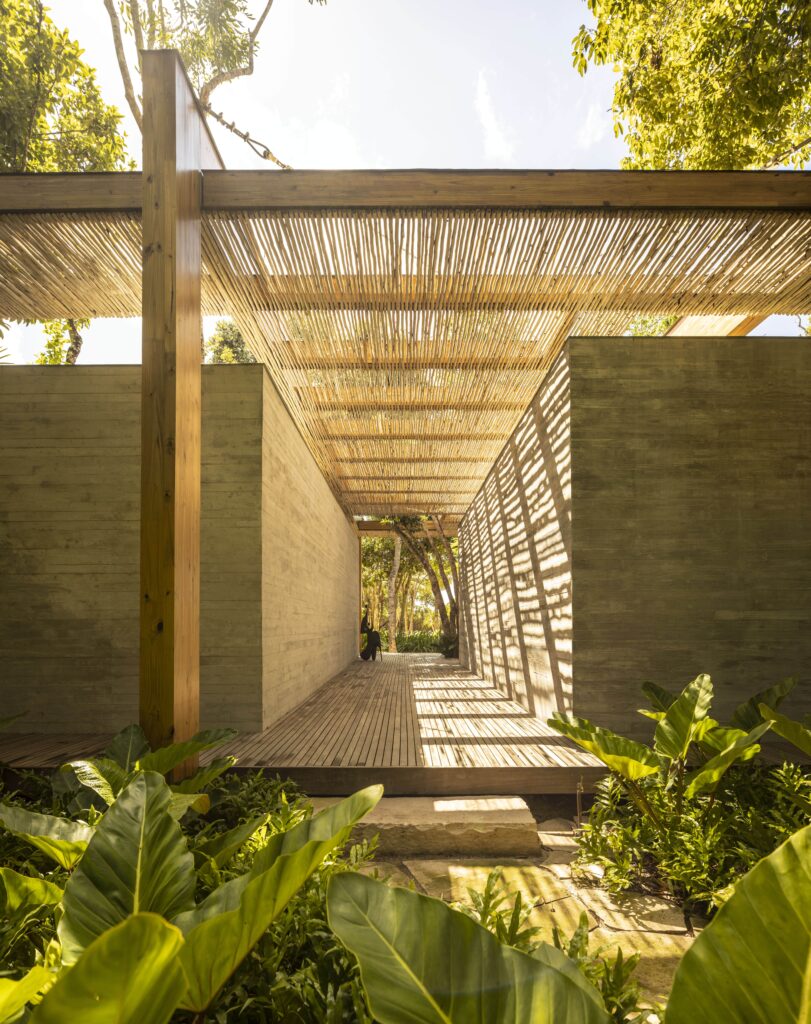
In Micasa Vol C (São Paulo, 2018), Studio MK27’s latest project for a leading Brazilian furniture retailer, Daylight floods the space through transparent walls that are opaque in the lower parts, clad in corrugated metal, and translucent in the upper sections. Artificial lighting, on the other hand, is managed by concealing light sources, diffusing through translucent materials like paper or textiles, or reflecting off nearby surfaces.
SECTION 4 – BODY by Scott Mitchem
The fourth section of the book – aptly highlighting the relation with the body – is dedicated to Studio MK27’s works in product design, a field the studio started approaching in 2010 with a show in São Paulo, followed by a presentation at the 2011 London Design Festival garnering acclaim from public and professionals alike. The first commission came from Italian bathroom design company Agape to reinvent the bathtub, a product with perhaps the most intimate contact with the body. Studio MK27 called its new design “Discussing the Relationship”, emulating the Italian tradition of pursuing humour through bold product names.
In 2018, after collaborating with Italian and Brazilian companies, furniture design had already become a focus for the studio: that year Kogan’s modernist sign interwove with the DNA of Minotti, who has been able to translate his architectural language into furnishing pieces with a strong identity.
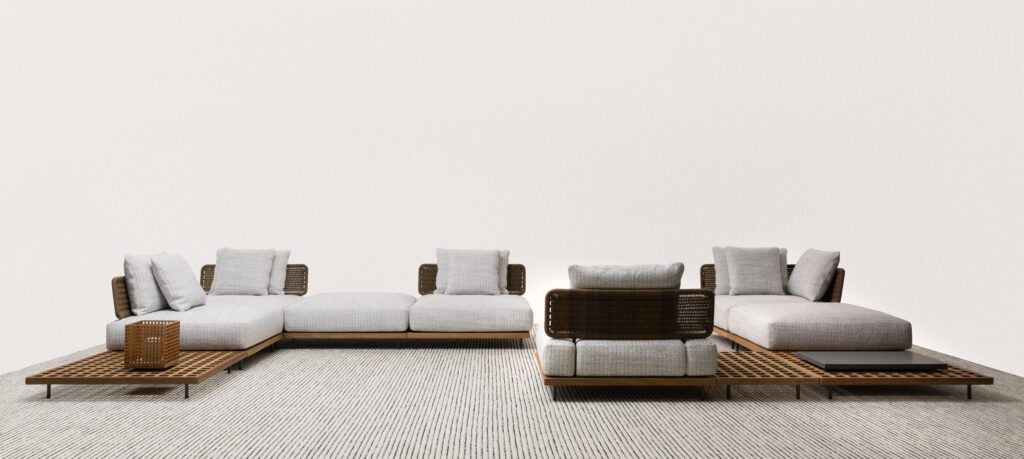
Along with the brand’s art director Rodolfo Dordoni, Studio MK27 and Minotti continued to refine their unique process, their ability to research, innovate, and accent their rich, warm brand of modernism with subtle nods to history and culture.
Being Rodolfo Dordoni a well-known architect in the international design scenario, he supported Studio MK27 to interpret the world at varying scales and bring their focus down to a smaller scale, with furniture that people can touch and feel, creating a literal and figurative connection to humans, their most diverse needs and tastes.
SECTION 5 – TEXTURE by Filippo Bricolo
The textures in Studio MK27’s architectural works – wooden volumes containing living spaces, stone walls, or exposed reinforced concrete – have marked the fortune of the firm and are often read as design features. In reality, these surfaces are configured as devices that convey meaning, creating a dialogue between the projects and those who experience them.
All these surfaces are connected to Kogan’s classical soul, and to the studio’s desire to purify their work leaving complexity behind, hidden in the necessary construction. Texture is the instrument to underline this constant research for simplicity, for finding order among chaos.
Everything is tactile in Studio MK27’s work, even when this choice seems awkward in the system of houses and hotels for a high-level clientele that often sees glossy surfaces as a representation of luxury or wealth. But the greatest wealth is that of our rediscovered humanity, and therefore that elegant imperfection of materials that resembles us deeply.
About Studio MK27
While trying to keep it simple, Studio MK27 strives to blur the boundaries between the built and natural environments. The team aims to craft unique narratives meticulously designing spaces that celebrate textures and intricate details.
Since 2001, when Kogan implemented a co-creation and cooperative work system, Studio MK27 has received over 250 national and international awards. Kogan himself is an honorary member of the AIA (American Institute of Architecture), a professor at Politecnico di Milano, and serves on the board of the Museum Of Art of São Paulo (MASP) and the Brazilian Museum of Sculpture and Ecology (MUBE). He was recognized by Época magazine as one of the 100 Most Influential people in Brazil, included in “Wallpaper’s 150 Famous for 15 Years,” and ranked 39th in Dezeen’s Hot List 2017.
STUDIO MK27 + MINOTTI
Founded in 1948, Minotti is one of the most prominent Made in Italy design companies with more than 50 flagship stores around the world, run by the second and the third generation of the family company.
Both inspired by the principles of Modernism, Studio MK27 and Minotti share the same work ethic and passion for form and materials, with refined details that contribute to creating an impeccable style, characteristics that can be found in the modular outdoor seating system Quadrado, their first project presented at Salone del Mobile. Milano in 2018. The Daiki seating collection, dated 2019, mixes Brazilian Modernism with Japanese design in a collection of armchairs that embodies pure Italian craftsmanship and international inspirations. In 2021 Brasilia, the homage to the effervescent and optimistic spirit of 1950s Brazil, and the Superquadra storage units, which derive their name from Lucio Costa and Oscar Niemeyer’s urban design project arranged into basic living modules followed by the Horizonte sofa seating system in 2022 and the Superblocks storage system unveiled in 2023. A specific version of the book with an exclusive foreword is dedicated to the collaboration between Minotti and Studio MK27, a partnership that started in 2018 and has resulted in many successful collections.



